For the love (and ecstasy) of great British festivals

Photographer Joe Puxley captures the messy euphoria of the UK’s big weekenders.
Culture
Words: Marigold Warner
Festival season is over. Tents have been dismantled, fields cleared and us Brits are back to school after the last of the summer sun. For many, festivals are a four-day haven – a utopia from the often rigid structures of Normal Life. Festivals swallow you up into a bubble of hedonism and, just as quickly, they spit you back out in the real world.
They are makeshift homes where friends are made, lovers are found, drugs are taken and minds are lost. Nowhere else will you see grown adults stomping barefoot in the mud, or doing rollie pollies down balding hills of grass against the distant warbles of global superstars or the pulsating sets of techno’s finest.
During the pandemic, photographer Joe Puxley felt the festival blues – hard. More than the live music, it was the atmosphere and the campsite camaraderie he missed most. Mornings spent mixing warm drinks into plastic bottles; late nights stumbling back to the tent arm-in-arm; losing all your mates and falling in love with a stranger.
When real-life events slowly made a comeback in 2021, the 22-year-old photographer set out to capture these overlooked moments away from the mainstage and in the hidden rabbit holes. Shot around the UK at festivals such as Latitude, Boomtown, Shambala and Love Supreme, Puxley’s project is now part of a growing, ongoing series titled Collective Effervescence.
For now, sooth your blues as Puxley talks us through the Great British festival – Pot Noodles, hallucinations and all. They’ll be back again in no time… right?
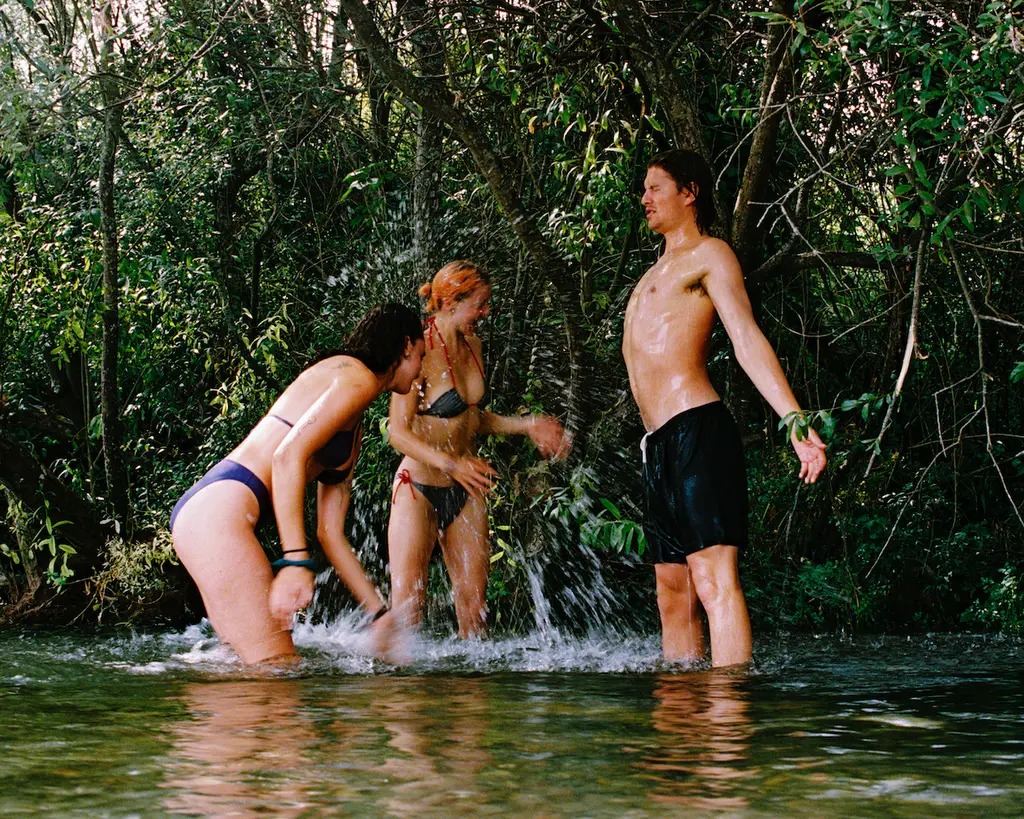
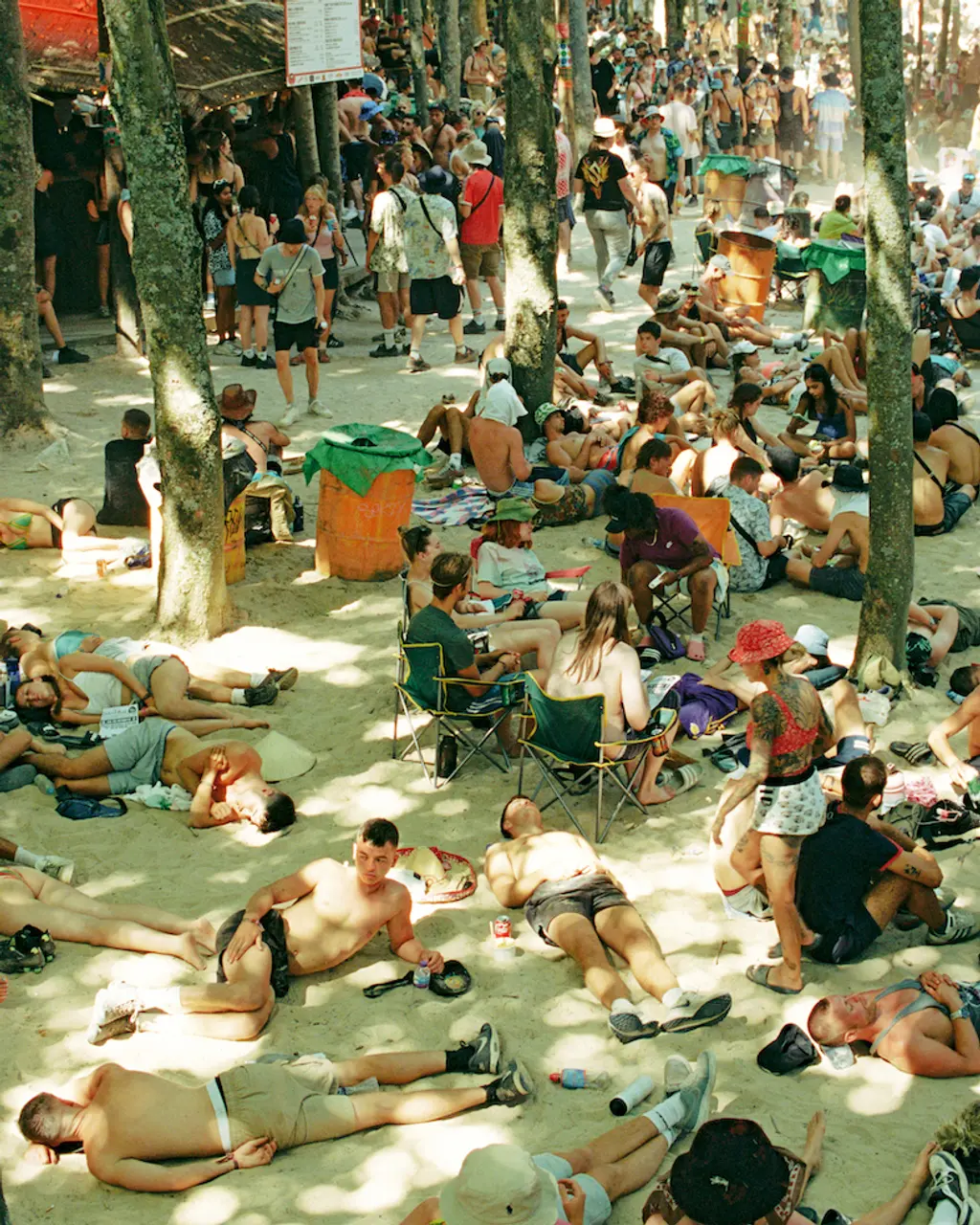
Hey, Joe! Why did you start this project in the first place, and what were you hoping to capture beyond the standard festival photography?
I’m interested in the shared moments that we easily forget, like eating a Pot Noodle for breakfast, or watching the fog rolling over campsites at sunrise. These moments don’t feel significant when we’re in them, but they embody all those feelings of oneness and freedom that festivals are charged with.
My need to capture this came out of frustration during lockdown. I didn’t have many pictures that really took me back to those brief periods of time. At a gig, it makes total sense to point our phones at the performers, but the magic of these events comes from the intimate moments in between. I could see a lot of this in pictures of Woodstock, or Seana Gavin’s images of free parties in the ’90s. Those were the starting points for this work. Their saturated, hazy aesthetic felt like someone was replaying my memories.
Do you remember your first festival?
It was the summer of 2018. I’d just finished school, and I had some traumatic stuff going on in my personal life. I got last minute tickets to Latitude with a huge group of girls I didn’t really know – it was fucking magical. It was the first time I felt like I could really be myself. I was in absolute tears arriving back on Monday, and I knew it wasn’t just a comedown.
This sparked my interest in understanding these rituals, which led me to Emile Durkheim’s theory of ‘Collective Effervescence’. Durkheim states that when a group of people come together to take part in a shared purpose, like walking on coals or watching football, they become unified. This creates a sense of oneness, which I think leads to the freeing state we enter at festivals. That’s what inspired the title of this project.
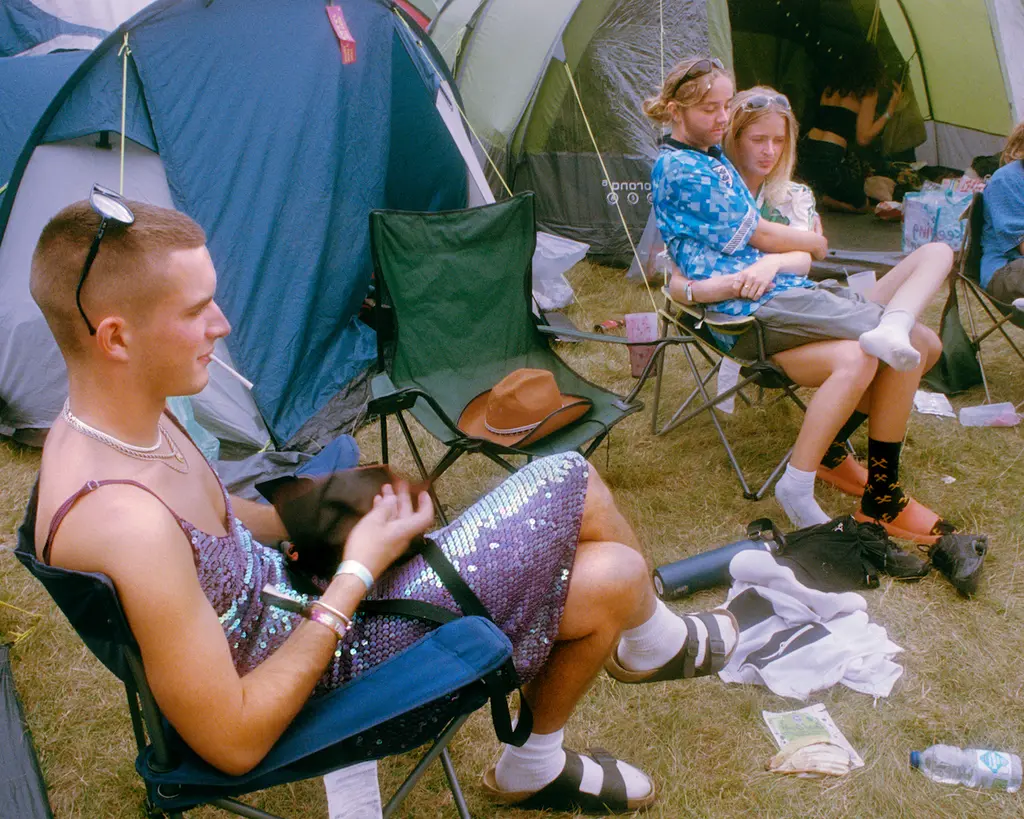
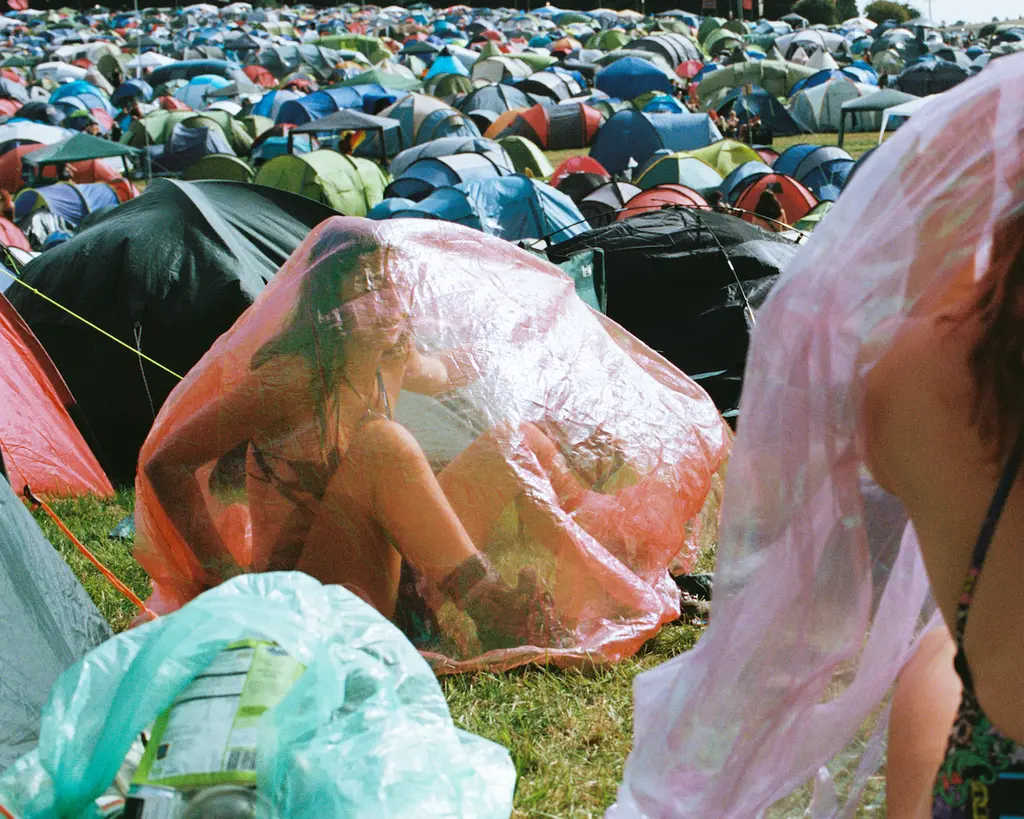
What are your favourite moments to capture?
I love the sunrise. I don’t want to make it overly deep, but the kind of people that gather round the campfire at 7am always seem to have such an appreciation for what’s going on. Just the other weekend at Shambala, I ended up speaking to a gay couple for about five hours, sharing our queer experiences. It was really beautiful. I can’t think of another context where we come into contact with so many people completely out of our usual circles.
UK festivals feel pretty unique. When Brits are put in a field with a sound system and their mates, they just seem to know how to have a good time. Why do you think that is?
British society can be so individualistic – it’s dissonant from the tribal and humanistic roots we have as humans. A lot of my friends say that festivals feel like how we should always be living. Festivals feel distant from our online lives, and much closer to how humans used to live.
Drugs must have a part to play in that, too. How have you experienced that part of festival culture?
Drugs help us open up. British people aren’t famous for being able to talk about their feelings, and I think drugs completely shift this culture. For many people, they give us permission to be ourselves. They definitely gave me permission to express myself and be vulnerable as a young person.
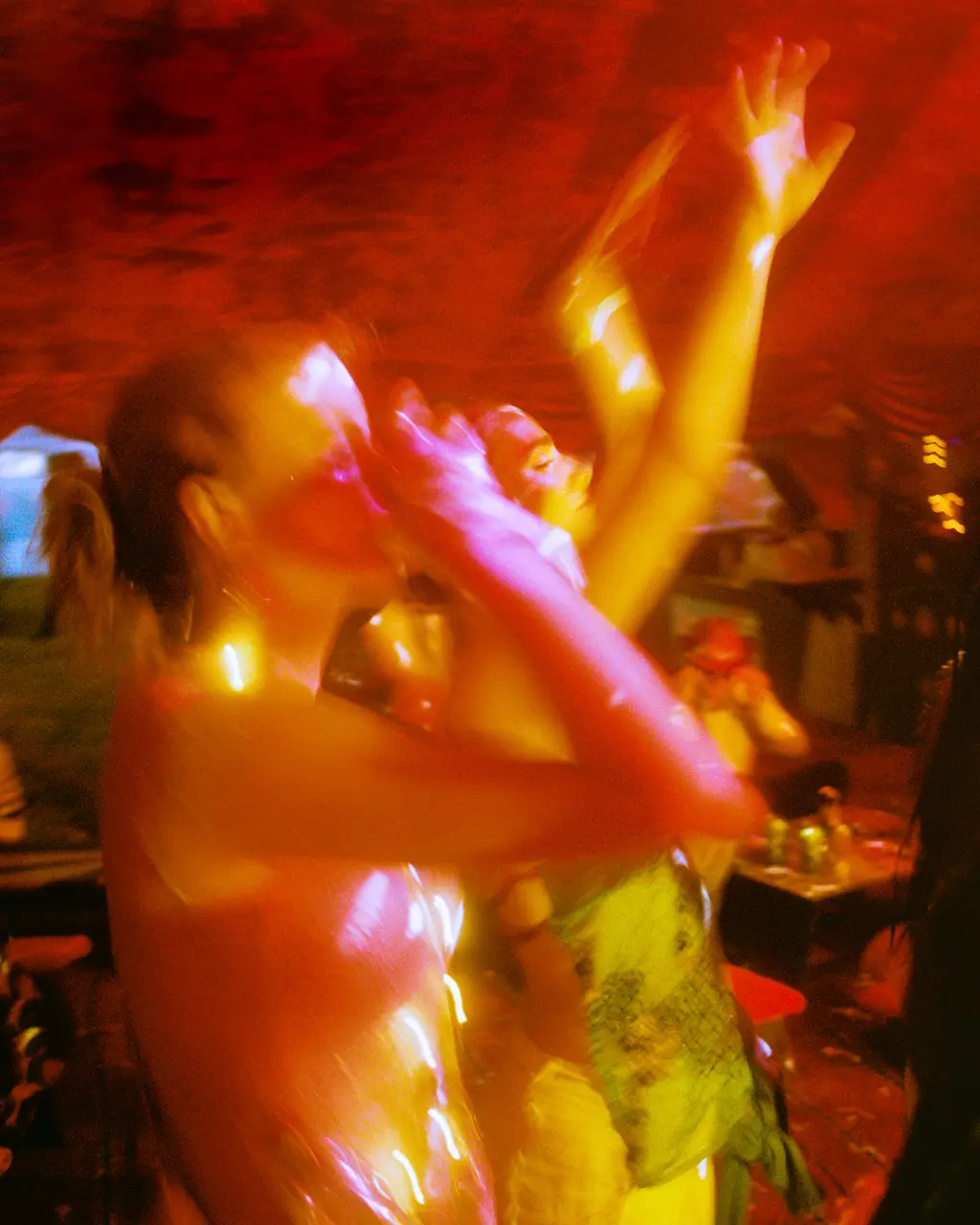
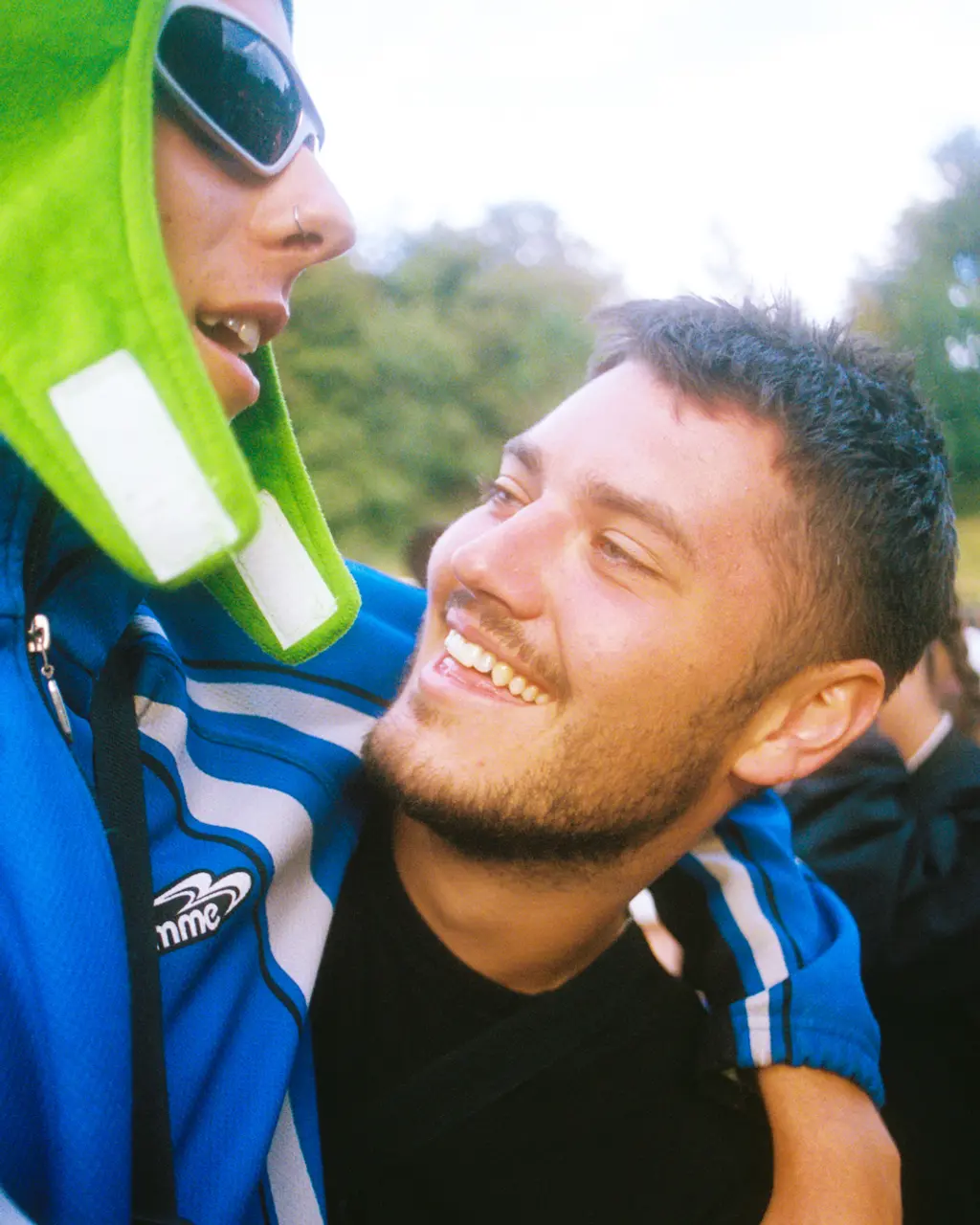
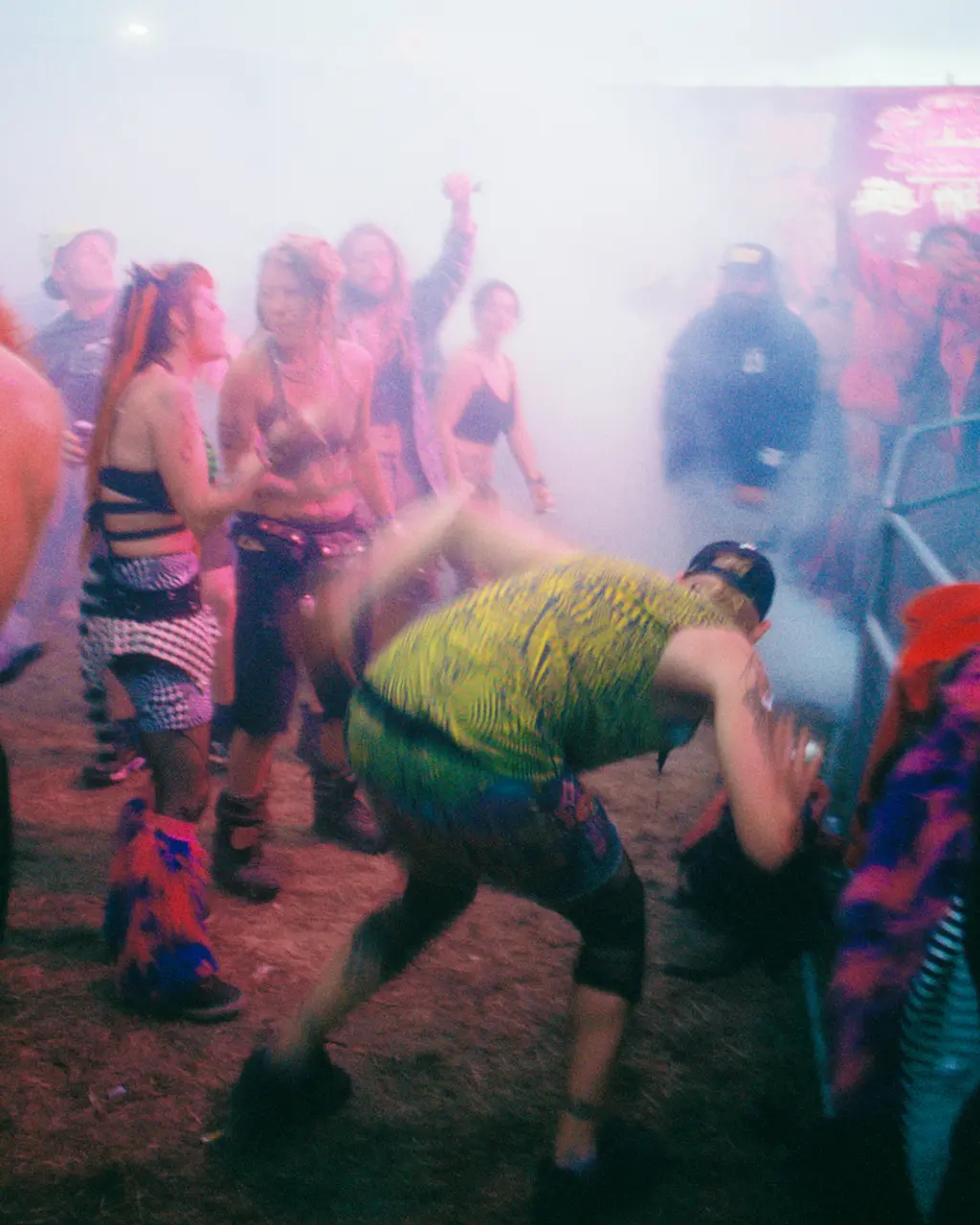
What’s the strangest thing you’ve seen at a festival?
I’ve seen people smoke their own blood at festivals before, and one time me and my friends thought we were frogs. At Shambala, I was pretending to be a lobster while a Russian girl ate me with a knife and fork. We ended up running away together, and it was so beautiful learning about our parallel experiences from two completely different lives.
Have you made any lasting friendships through going to festivals?
Sophie, Nila, Martha, Anya, Liv, Peter the wizard, Nikita, Lila, Toby and Dan and, of course, Jaryd.
What do you plan to do with these photos now that the season’s over?
My festival work doesn’t really feel like a project with a beginning and end. I think I’ll just keep taking pictures until I don’t go to festivals any more. I’m really excited about the value the photos will have in the future. Festivals feel like a really proud and current demonstration of everything happening in youth culture in this country, and so much of that – from Elf Bars to mullets – will be really satisfying to look back on.








